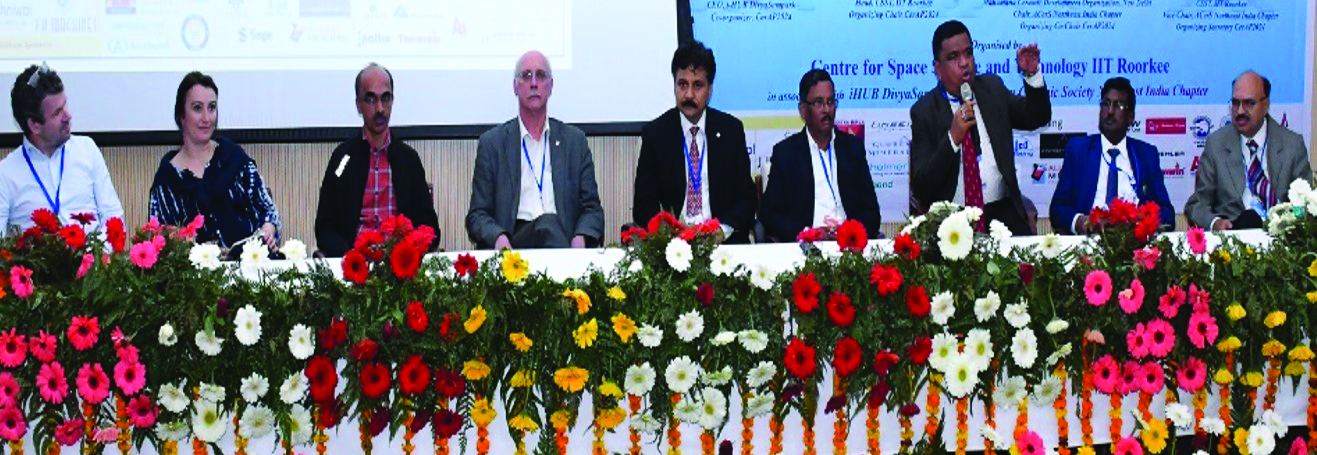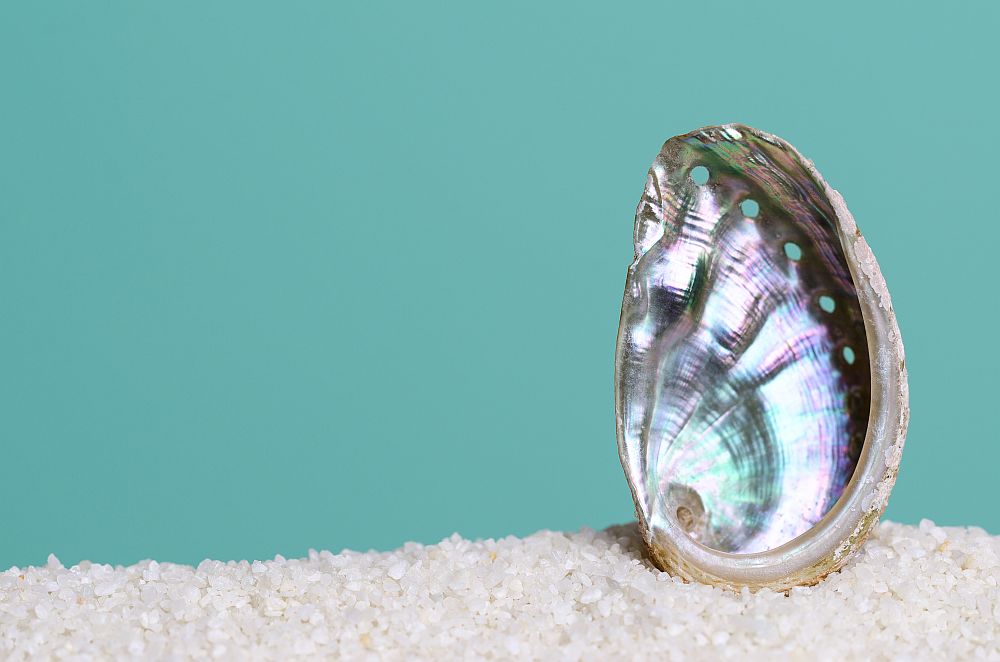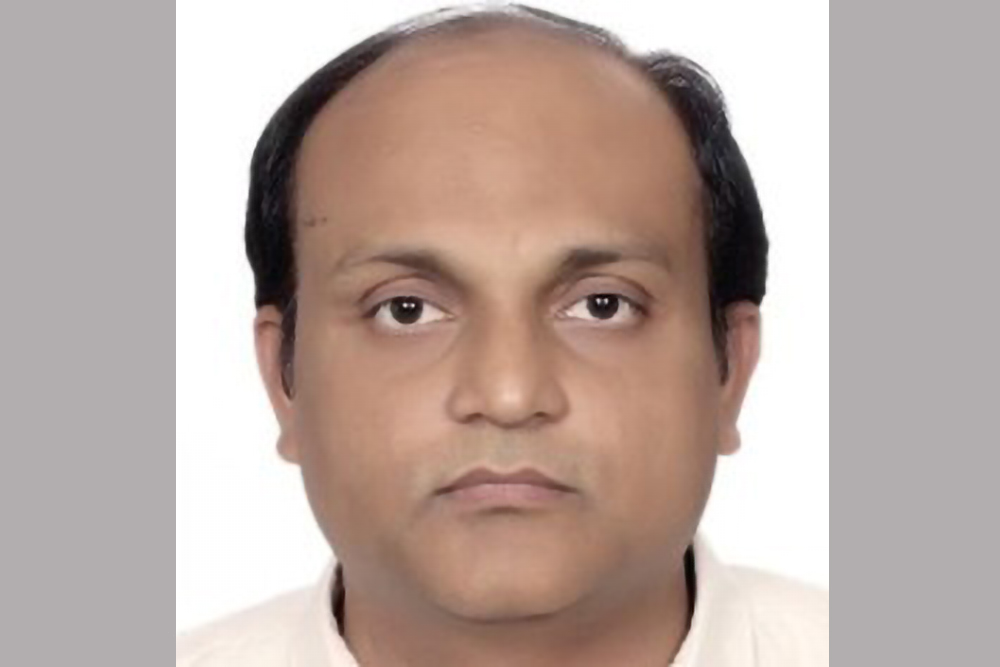
[Image above] Speakers at the “Ceramics for Sustainable Society: Challenges & Path Forward” roundtable discussion. From left: Emmanuel Guilmeau, Valérie Pralong, M. R. Ajith, Jon Binner, Sanjay Mathur, S. Packirisamy, Bikramjit Basu, Sitendu Mandal, and Syam S. Rao. Credit: Manoj Kumar
Article contributed by B. Venkata Manoj Kumar, professor and head of the Department of Metallurgical and Materials Engineering at Indian Institute of Technology, Roorkee
The ceramics industry requires collaborative initiatives to ensure that sustainability is prioritized throughout the entire sector’s operations and supply chain. Such efforts were exemplified by a dedicated session during the 4th Global Ceramic Leadership Roundtable in March 2024.
The Global Ceramic Leadership Roundtable is a conference that aims to bring together both young and experienced researchers and industry personnel to deliberate on recent progress and emerging prospects in the synthesis, processing, characterization, and performance of advanced ceramics.
The fourth edition of the conference, which was organized under the theme “Ceramics for Frontier Sectors: Emerging Advances and Prospects,” took place at the Center for Space Science and Technology at the Indian Institute of Technology (IIT) Roorkee from March 11–12, 2024. ACerS International Northeast India Chapter and iHUB DivyaSampark at IIT Roorkee co-organized the event.
L. K. Sharma, CEO at Mahamana Ceramic Development Organization and chairman of ACerS International Northeast India Chapter, served as organizing co-chair and B. Venkata Manoj Kumar, professor at IIT Roorkee and vice chair of ACerS International Northeast India Chapter, served as organizing secretary for the conference.
The 4th Global Ceramic Leadership Roundtable featured an illustrious lineup of plenary, keynote, and invited speakers from esteemed research groups worldwide, including France, the U.K., Slovenia, the U.S., Germany, and various Indian institutions. The presence of distinguished luminaries, such as past presidents of The American Ceramic Society and the European Ceramic Society, as well as the then-president of the Indian Ceramic Society added immense prestige to the gathering. The then-chairman of the Indian Space Research Organization inaugurated the conference.
During the conference, a dedicated roundtable discussion on “Ceramics for Sustainable Society: Challenges & Path Forward” was held on the first evening of the conference. The following sections summarize the key takeaways from this dedicated session.
Ceramic challenges in India
ACerS Past President Sanjay Mathur, professor at the University of Cologne and chair of the roundtable, set the tone for the session by emphasizing the need for brainstorming on ceramics for sustainability. Using India as a model, he highlighted the perennial gap between research and application and cited the country’s lack of silicon production facilities as an example.
Bikramjit Basu, professor at Indian Institute of Science Bangalore and moderator of the roundtable, continued the discussion by highlighting India’s third position in ceramic research publications. However, he noted that the research funding in India comes mostly from the government, whereas in developed countries, industry funding plays a significant role.
Bhaskar Prasad Saha of ARCI, Hyderabad, highlighted another problem experienced by ceramics researchers in India, notably the nonavailability of domestic processing facilities for non-oxide ceramics. He underscored that these facilities are essential to advance the development of materials for space and defense, such as ultrahigh-temperature ceramics, a point also made by M. R. Ajith of the Vikram Sarabhai Space Center.
To address these challenges, Jon Binner, professor at the University of Birmingham and former president of the European Ceramic Society, provided some possible solutions based on his experience with industry–academia collaborations in Europe. He underscored the crucial role of adequate funding and flexibility in facilitating successful collaborations.
Valérie Pralong of CNRS provided another Europe-based example by sharing her expertise on how the French government supports labs and facilitates access to industry, encouraging collaboration and innovation. Emmanuel Guilmeau from CNRS and and Abhendra K. Singh from Baylor University enriched the conversation with their knowledge of ceramic materials and applications.
Industry–science–innovation
Shyam S. Rao of CUMI Bangalore underlined the industry’s shift toward sustainable practices and the need for research-oriented projects with commercial viability. Meanwhile, Sitendu Mandal of CSIR-CGCRI Kolkata highlighted the potential of national labs in producing glass and glass-ceramic products for strategic and societal sectors. He emphasized the need for a suitable policy to encourage small-scale industries and start-ups to adopt these technologies.
Packirisamy of Anabond Limited and former ISRO scientist stressed the importance of innovation in developing sustainable ceramics. He highlighted the crucial role of visionary start-ups in the development of cutting-edge technology, such as polymer-derived ceramics.
In response to a question from a young researcher who was seeking guidance on developing a vision for the bigger picture in ceramics, Mathur emphasized the importance of integrating industry and science from the outset. He encouraged young researchers to explore interdisciplinary approaches, collaborate with experts from various fields, and engage with industry partners to gain practical experience.
Basu added that developing a vision for the bigger picture requires a team effort. He suggested that young researchers should surround themselves with people from diverse backgrounds, including technology and business, to gain a comprehensive understanding of the field.
Ceramics education
Bharat Bhushan Jha of MRIT Bangalore mentioned that the development of technology at academic institutes or in industry should involve the user right from the initial stage to build trust. He also highlighted that there are only a few institutes that give undergraduate degrees in ceramics, whereas there is a huge demand for ceramic engineers. Mathur concurred that a trust deficit exists between academic institutions, research laboratories, and industry, hindering effective collaboration. He said the end goal is fixed, but the steps in between are not well planned.
As the discussion progressed, N. V. Ravi Kumar of Indian Institute of Technology Madras shared his optimistic views on India’s progress in ceramics education and research. He noted that establishing a robust foundation in ceramics education and research is essential for driving future advancements and innovation in the field.
Basu also agreed on the point that manpower training and skill development are needed. He stressed the importance of introducing and strengthening ceramic engineering programs in premier institutions, such as within the Indian Institute of Technology system, and other universities. He pointed out that merely a handful of institutes in India produce a limited number of ceramic engineering graduates annually, highlighting a significant shortage and underlining the urgent need to train a larger workforce of skilled ceramic engineers.
Finally, Binner highlighted the importance of achieving gender balance in science and technology, particularly in ceramics research and education. Mathur also supported this view, acknowledging that gender balance is a global issue that requires attention and effort.
Takeaways from the roundtable
The roundtable concluded with a consensus on the need for collaboration, innovation, education, and sustainability in ceramics research and development. The experts recommended the development of ceramic engineering programs, promotion of industry–academia collaboration, support for start-ups, and encouragement of women in science and technology.
Some of the papers presented during the 4th Global Ceramic Leadership Roundtable are published as special issue articles in International Journal of Applied Ceramic Technology. A deeper look at the Indian ceramics market is available as part of a recent Confederation of Indian Industry report on advanced materials, critical minerals, and metals: https://bit.ly/CII-2024-report-advanced-materials.
Author
B. Venkata Manoj Kumar
Spotlight Categories
- Meeting Highlights
- Section News
International Chapters
- Northeast India Chapter
Related Posts
Hypersonic workshop series launches successfully in Washington, DC
December 1, 2025
Volunteer spotlight: Ashutosh Kumar Dubey
November 10, 2025


